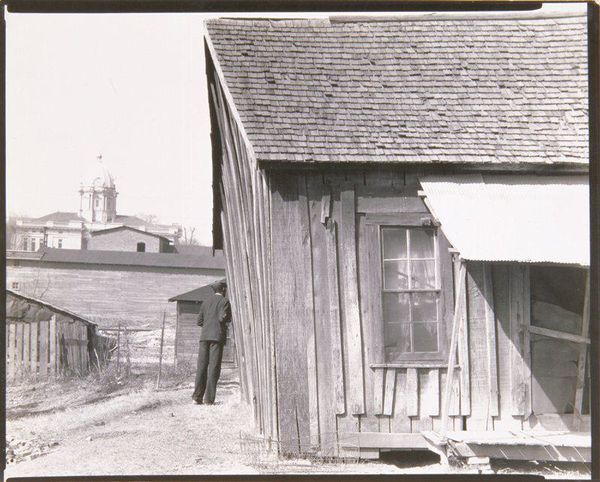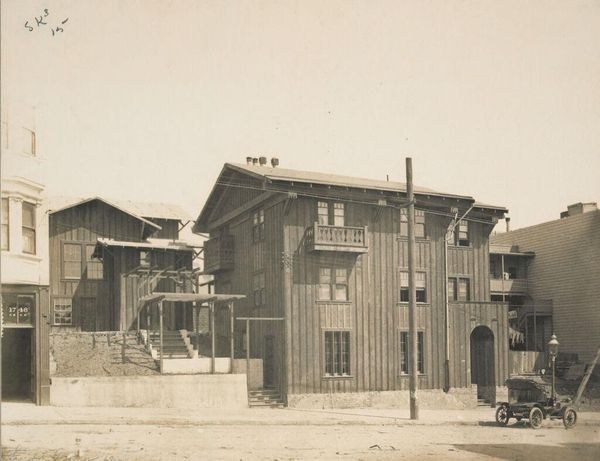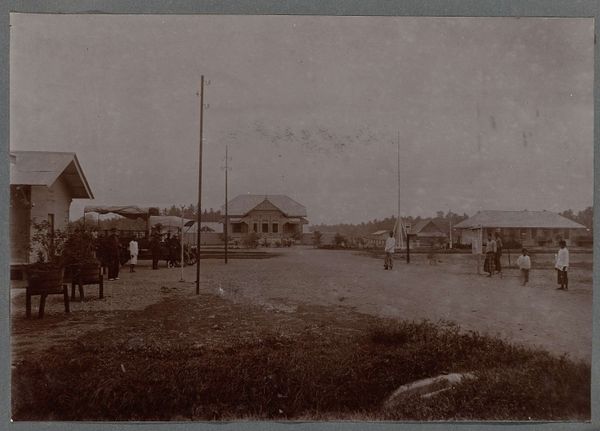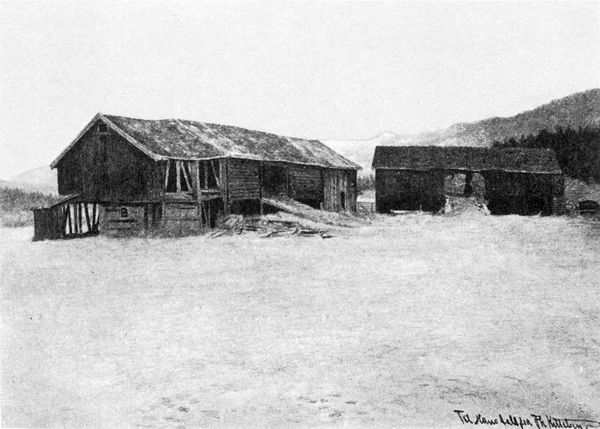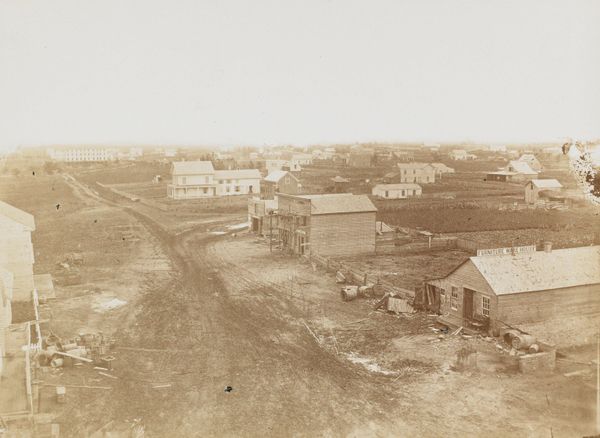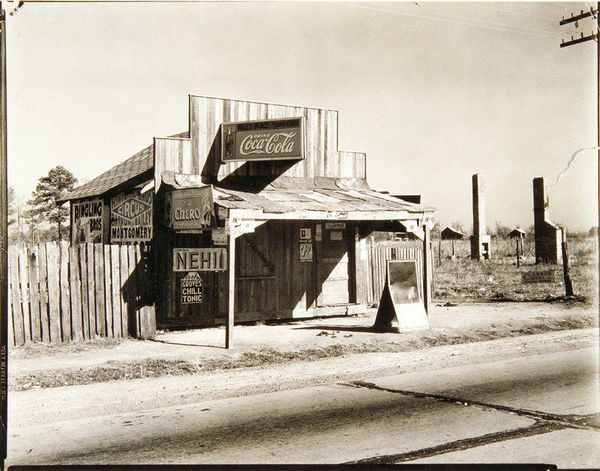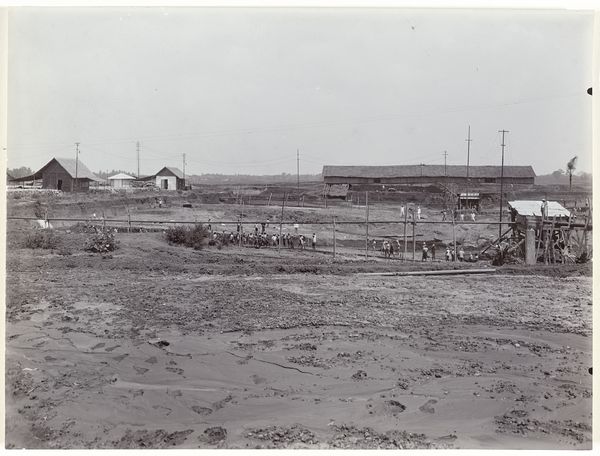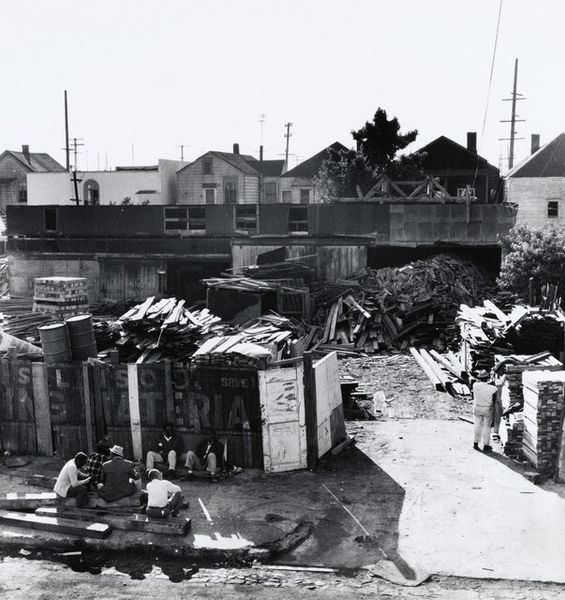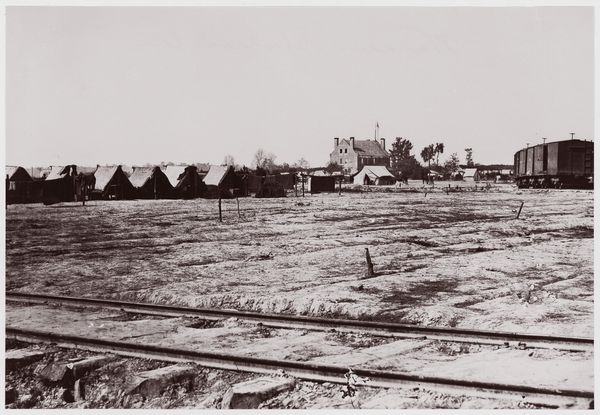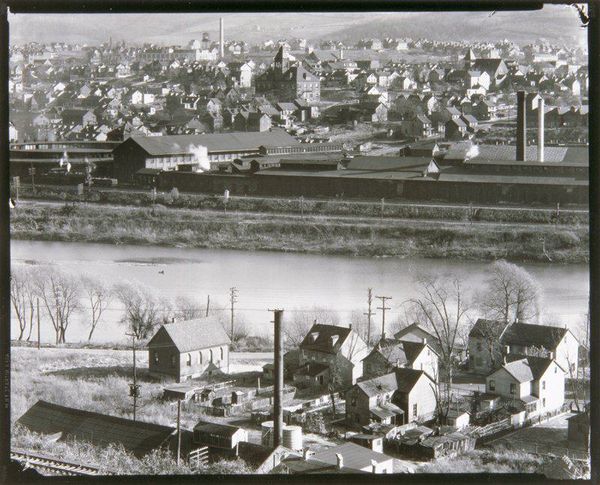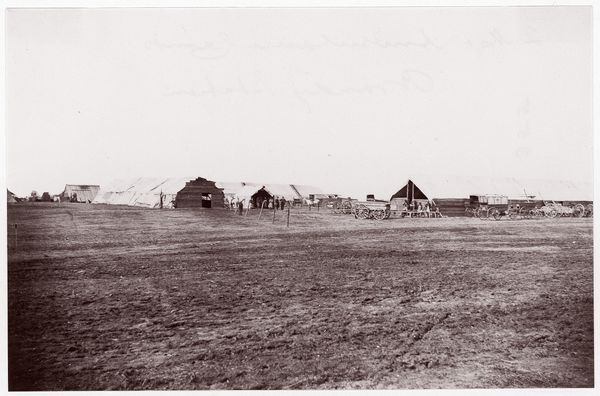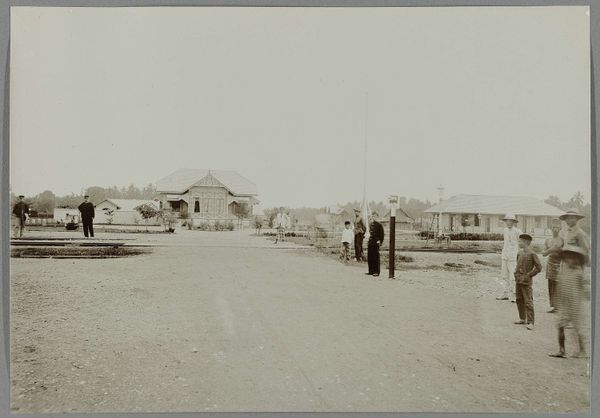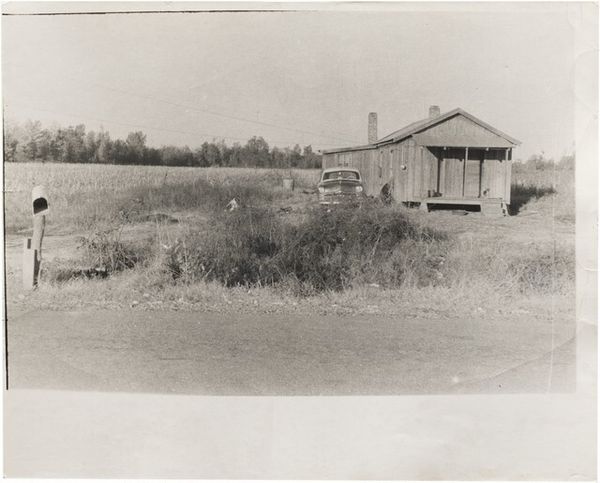
gelatin-silver-print, photography, gelatin-silver-print
#
excavation photography
#
gelatin-silver-print
#
black and white photography
#
street-photography
#
photography
#
black and white
#
gelatin-silver-print
#
monochrome photography
#
street photography
#
united-states
#
cityscape
#
monochrome
#
realism
#
monochrome
Dimensions: 7 9/16 x 9 9/16 in. (19.21 x 24.29 cm) (image)8 x 9 15/16 in. (20.32 x 25.24 cm) (sheet)
Copyright: No Copyright - United States
Curator: Here we have Walker Evans’ “Mayor’s Office,” a gelatin-silver print created in 1936. The piece resides here at the Minneapolis Institute of Art. What’s your immediate reaction? Editor: It’s stark, almost ghostly. The lack of people immediately makes you wonder about this place – where are all the power brokers? Curator: It certainly evokes a sense of desolation, doesn’t it? Evans often aimed for a documentary-like approach, capturing the raw reality of a scene without romanticizing it. Here, we see this small, almost diminutive building starkly labeled as "Mayor's Office." Editor: And that’s really the crux of it for me – the utter banality, yet quiet power of this image. The Great Depression was still in full swing in 1936. To see this emblem of authority rendered so…vulnerable, really speaks to the precarity of that moment in American history. Curator: Exactly. The puddle reflecting the sky and building hints at unseen depths, both literally and metaphorically. The reflections soften the stark geometry, offering a brief escape from the austerity of the scene. Editor: Look at the placement too – it’s almost mocking. Wedged between the dilapidated building beside it and what appears to be railroad tracks. It lacks a sense of grandeur or civic pride, and more reflects neglect. This isn’t the glorious image of governmental authority, it's just existing at ground-level. Curator: Yes, and you notice those telephone wires overhead, creating a visual cacophony against the sky? There's something so poignant about the contrast between the promise of connection they represent and the isolation felt in the scene. Editor: Right. The visual cacophony mirrors the social dissonance. Promises were not being met. Infrastructure was decaying and the office sits smack dab in the center. The framing becomes an accusation. Curator: There is such clarity in its statement, a certain stoicism about that time. A testament to Evans' skill in capturing the essence of American life during a period of profound social and economic change. It feels surprisingly… contemporary. Editor: Indeed. Evans’ starkness speaks volumes about power, authority, and the lived experiences of ordinary people. Its unsettling beauty reminds us of what's at stake when systems crumble.
Comments
No comments
Be the first to comment and join the conversation on the ultimate creative platform.
